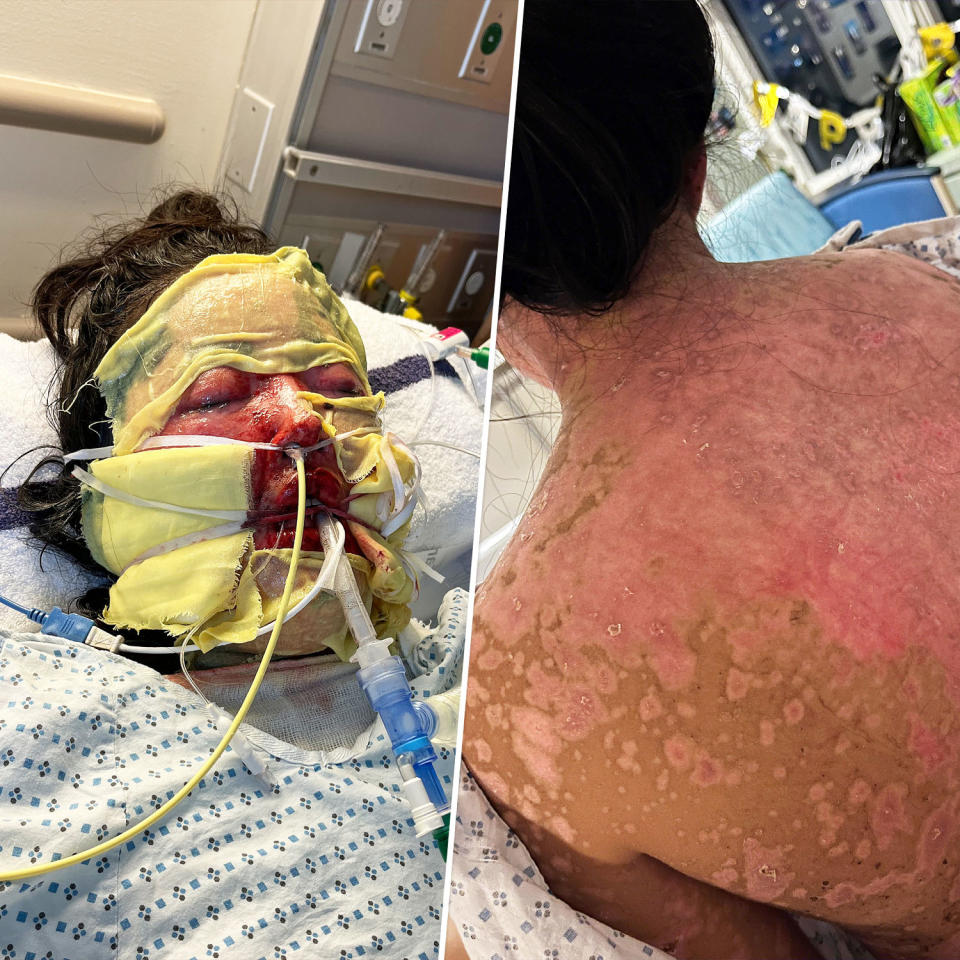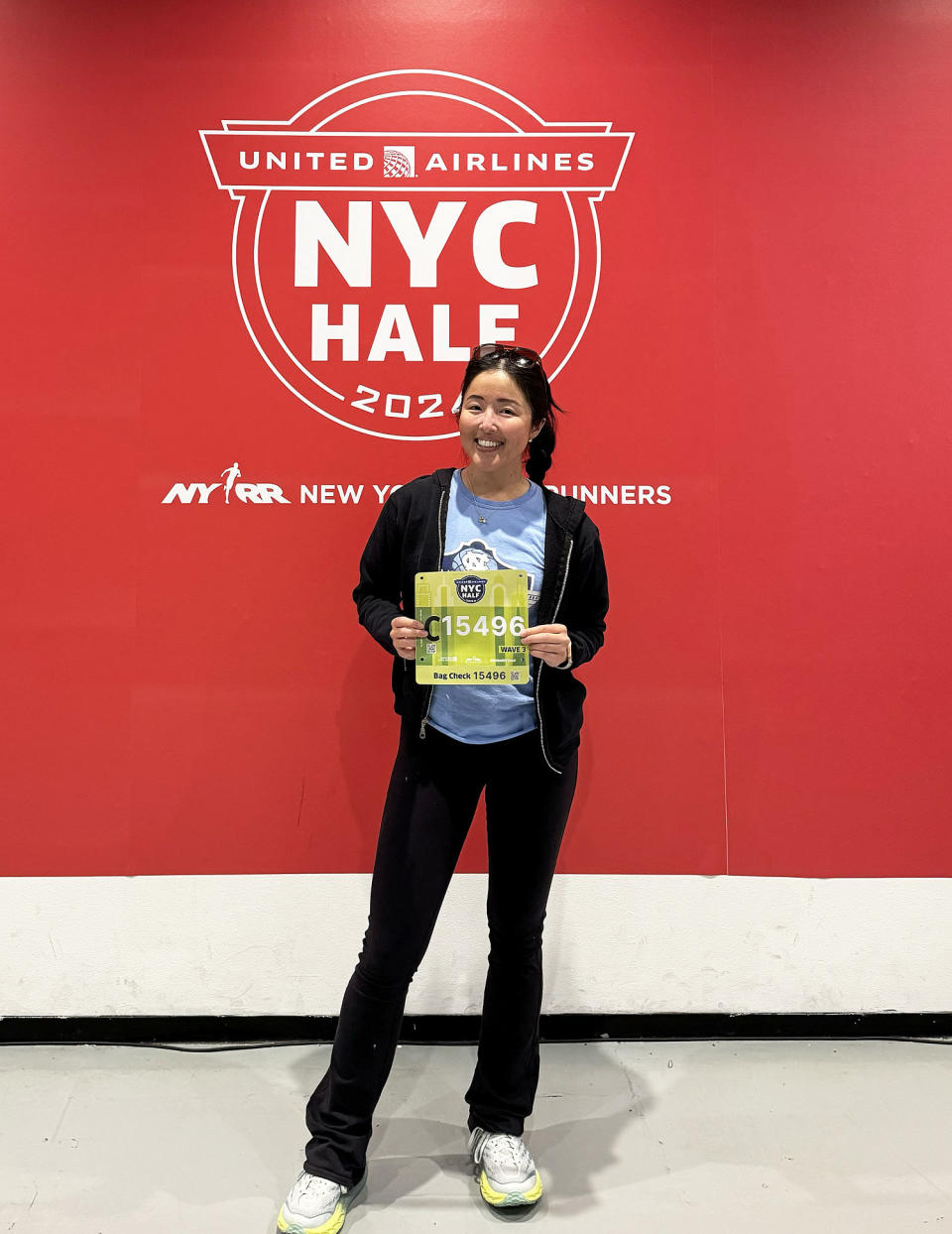“I think she could have SJS, though we’ll need to order a skin biopsy to confirm it,” my friend Claire heard one doctor murmur to another. After a quick Google search, we learned it was an acronym for Stevens-Johnson syndrome, a disease we had never heard of.
I whispered to Claire that SJS were my exact initials — as if it were a disease made for me. Despite the intense pain, I still managed to crack a joke. I wasn’t aware that this diagnosis would soon flip my life upside down as a healthy 20-something trying to make it in New York City.
The day before, I called an Uber to take me to an urgent care center. It was only five blocks away, but just getting downstairs from my third-floor walk-up apartment felt like an impossible feat. I was on the verge of collapsing. My mind felt foggy, and I’d had body aches and chills for three days that prevented me from sleeping for longer than 10-minute bouts. Advil and Tylenol hadn’t helped.
After negative COVID, flu and strep tests, the doctor ultimately determined that I likely just had a new strand of the flu that tests couldn’t detect. I was young and healthy, so, despite how incredibly sick I felt, surely nothing was terminally wrong with me. The doctor prescribed me a course of amoxicillin to curb my mysterious illness. I went home and took the first (and only) dose that evening — of a medication I had been prescribed many times before — but the next day I woke up in even worse condition, in an intense, feverish panic.
My thermometer now read 107 degrees and the pain throughout my body was unbearable. I was in fight-or-flight mode, and the next few hours that passed were a complete blur. I took another Uber back to that same urgent care center, tearfully begging for help. They referred me to an emergency room in the Financial District, so I took yet another Uber there.
Unbeknownst to me, a rash began to form on my body. It started as small speckles on my forearms and cheeks, and within a few hours, it erupted into massive blisters from my head to my lower torso. My best friends, Claire and Pablo, arrived at the ER later that afternoon after work and class, taking turns to be with me since only one guest was allowed in the room at a time. While rotating every hour, they overheard in the hallway that I would need to be transported to the Weill Cornell Medicine burn center on the Upper East Side immediately.
Claire accompanied me on the ambulance ride to the intensive care unit, which would end up being my new home for the next month. My eyelids had crusted over by this point, making my vision go totally dark for several months thereafter. Throughout that first night in the ICU, I was probed and prodded as several doctors took multiple biopsies from my left arm and placed a catheter into my bladder. My bodily systems were rapidly failing me. More sores developed down my throat and into my lungs, rapidly closing my airways and necessitating a ventilator.
I was so critically ill that a team of burn surgeons, infectious disease specialists, ophthalmologists, dermatologists, and their fellows in tow, surrounded me for multiple hours on end. Although the ventilator and Christmas tree of fluids were the only things keeping me alive, amazingly my consciousness remained intact. I began eavesdropping on each conversation as if I were at a soirée, only I was the main subject of the party that night.
I had been a difficult patient, or so I’d heard from the murmurs during these shift changes. Even though I was heavily sedated, I felt the weight of the words said around me. I became even more deranged by the evening hours and experienced vivid hallucinations — I’d later learn this was known as sundowning. I turned into an escape artist by night, repeatedly ripping out my feeding tube and IV hookups during my ICU stay. I remember hallucinating several times and was convinced that someone was trying to kill my loved ones.
My doctors eventually not only confirmed that I had Stevens-Johnson syndrome, but a more severe form known as Toxic Epidermal Necrolysis (TEN), since more than 30% of my body was affected. With a mortality rate of 30-50%, I received a heavy dose of steroids to slow the progression of the disease and a considerable amount of opioids to prevent septic shock. Although I wasn’t a burn victim by definition, the blisters that formed left me with internal and external second-degree burns throughout my body’s mucous membranes.


SJS/TEN is an incredibly rare disease — occurring in about one or two in a million people. It’s an allergic reaction triggered by a medication, most commonly antibiotics, or even another illness. There’s no way to know what caused my disease — whether it was Advil, Tylenol, amoxicillin or something else. Doctors now tell me to avoid taking these altogether to avoid a relapse — this is a common and frustrating problem among survivors of SJS, who struggle to find other ways to manage their pain and illnesses.
With insufficient research on the disease, it’s a miracle that the ER doctors were able to suspect what was happening to my body in a relatively quick timeframe. I’ve met others in survivor groups who weren’t as fortunate; their misdiagnoses cost them even more pain and long-term side effects.
My nurses were my lifeline. As my body shed layers of skin, blood and thick mucus at an uncontrollable rate, they slathered layers of A&D cream, changed out fresh gauze, emptied the catheter drainage bag and cleaned out my bedpan.
Even without the ability to see or talk, I forged a friendship with some of them that I’ll never forget. They were also incredibly gracious to my friends, allowing them to litter my room with get-well balloons and dozens of photos of happier times.


I wondered if I’d ever get to see my nurses again, long after they’ve seen me during the worst days of my life. I want to thank them eternally for looking after me with a level of intense care that’s unimaginable to most.
Eventually, my condition began to improve. Two weeks into my stay in the ICU, I celebrated my 24th birthday — the head burn surgeon even surprised me with one of my favorite desserts: a rich chocolate cake from Little Cupcake Bakeshop. That same day, they removed the ventilator. I had daily physical therapy sessions until discharge day to learn how to walk again after losing nearly 25 pounds.
Nobody tells you that surviving the ICU is just the beginning. I’m approaching two years since my diagnosis this month, and while my good days are starting to outnumber my bad ones, my eyes remain the most painful reminder of the battle I’ve survived. Although I was fortunate that my eyesight returned within a few months, the scarring over my meibomian glands has left me unable to produce tears for the rest of my life. Consequently, I regularly see a team of ophthalmologists to manage severe dry eye syndrome and recently underwent glaucoma surgery.


There is no cure for Stevens-Johnson syndrome, only a mend for the soul that has endured unimaginable trauma. After leaving my full-time job to focus on my recovery, I began freelance writing, training for the New York City Marathon this fall, and traveling the world within my health means. Most importantly, my soul finds healing by reconnecting with my nurses, meeting other survivors and raising awareness for this rare disease. As a survivor, my initials, SJS, have a completely new meaning for me.
This article was originally published on TODAY.com
